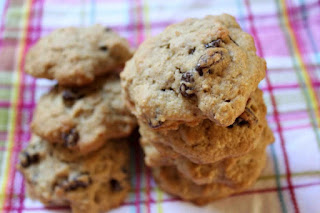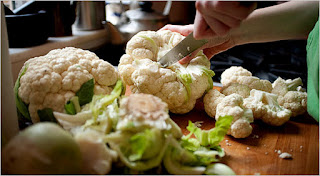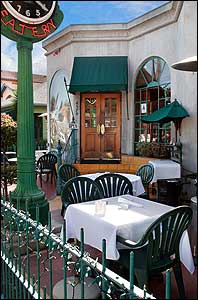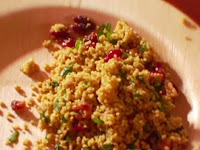Cooking with my Kid is another food blog with a number of yummy recipes (all kid-help friendly) and I'd recommend it to any friends/readers with children interested in helping out.
One of the recipes that I think is just fantastic is Breakfast Cookies...I mean who amongst us doesn't have our inner child begging for a cookie in the morning (now and then). So why not bake muffin-like cookies and indulge in a healthy way.
Breakfast Cookies
Prep Time: 15 mins Cooking Time: 12 mins
Ingredients:
1 cup whole wheat pastry flour
 1/2 cup all purpose flour
1/2 cup all purpose flour1/2 teaspoon baking soda
pinch of salt
1 teaspoon cinnamon
1/2 stick butter
2 1/2 cups applesauce
1/3 cup brown sugar
1/3 cup granulated sugar
1 egg
1 teaspoon vanilla extract
1 cup oatmeal
1 cup dried cranberries
Preheat the oven to 400 degrees. In a medium bowl whisk together flours, baking soda and salt. Set aside. Cream butter and sugars in an electric mixer until fluffy. Mix in egg and vanilla. Add the flour mixture and mix until JUST blended. Do not over mix. Fold in the applesauce, oats and dried cranberries. Scoop out batter onto a greased cookie sheet (I highly recommend using a Silpat), flatten slightly and bake for 12 mins or until toothpick comes out clean. These come out tasting more like muffin tops than cookies. That’s what makes them great! Makes about 2 dozen.
Breakfast Cookies II
Ingredients:
1 cup whole wheat pastry flour
 1/2 cup all purpose flour
1/2 cup all purpose flour1/2 teaspoon baking soda
pinch of salt
1 teaspoon cinnamon
1 stick butter
1/3 cup brown sugar
1/3 cup granulated sugar
1 egg
1 teaspoon vanilla extract
1 cup oatmeal
3 mashed bananas
1 cup raisins
Preheat the oven to 400 degrees. In a medium bowl whisk together flours, baking soda and salt. Set aside. Cream butter and sugars in an electric mixer until fluffy. Mix in egg and vanilla. Add the flour mixture and mix until JUST blended. Do not over mix. Fold in the banana, oats and raisins. Scoop out batter onto a greased cookie sheet (I highly recommend using a Silpat), flatten slightly and bake for 12 mins or until toothpick comes out clean. Store these as you would muffins so they remain moist.

































